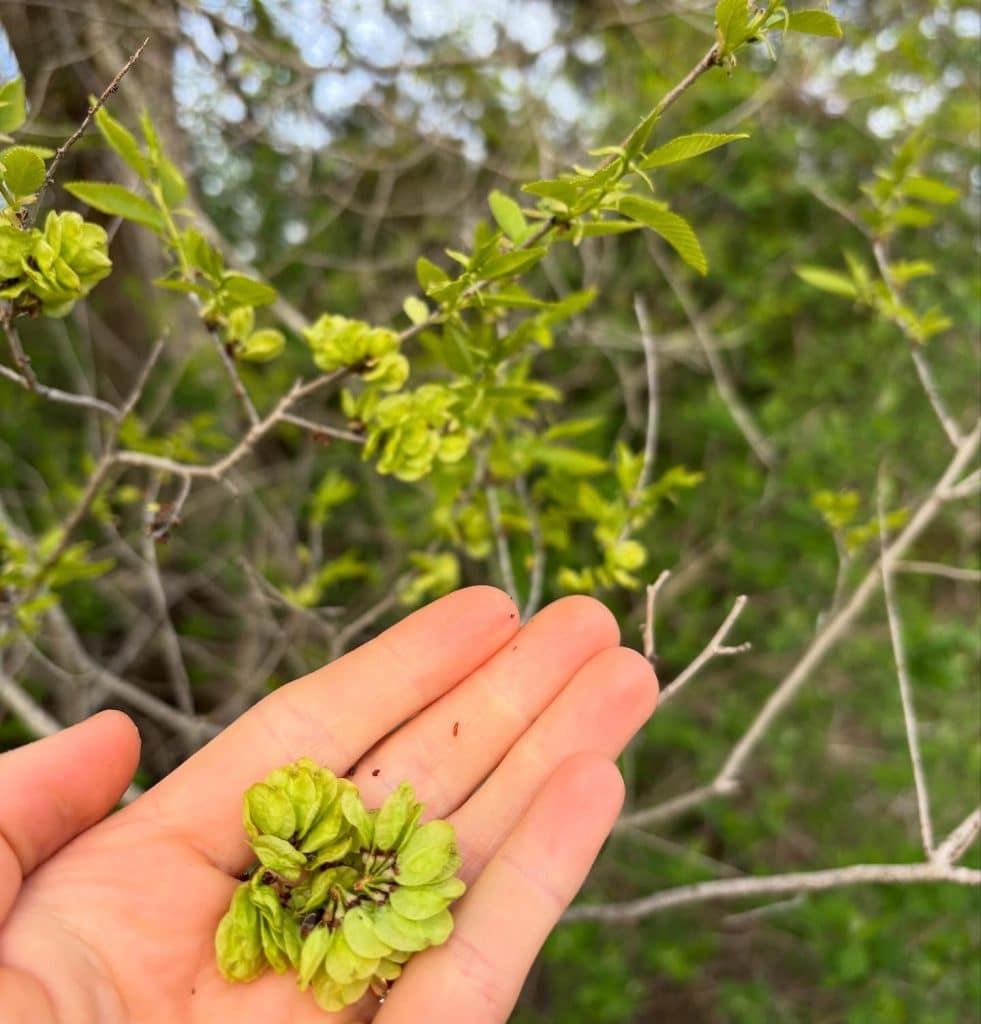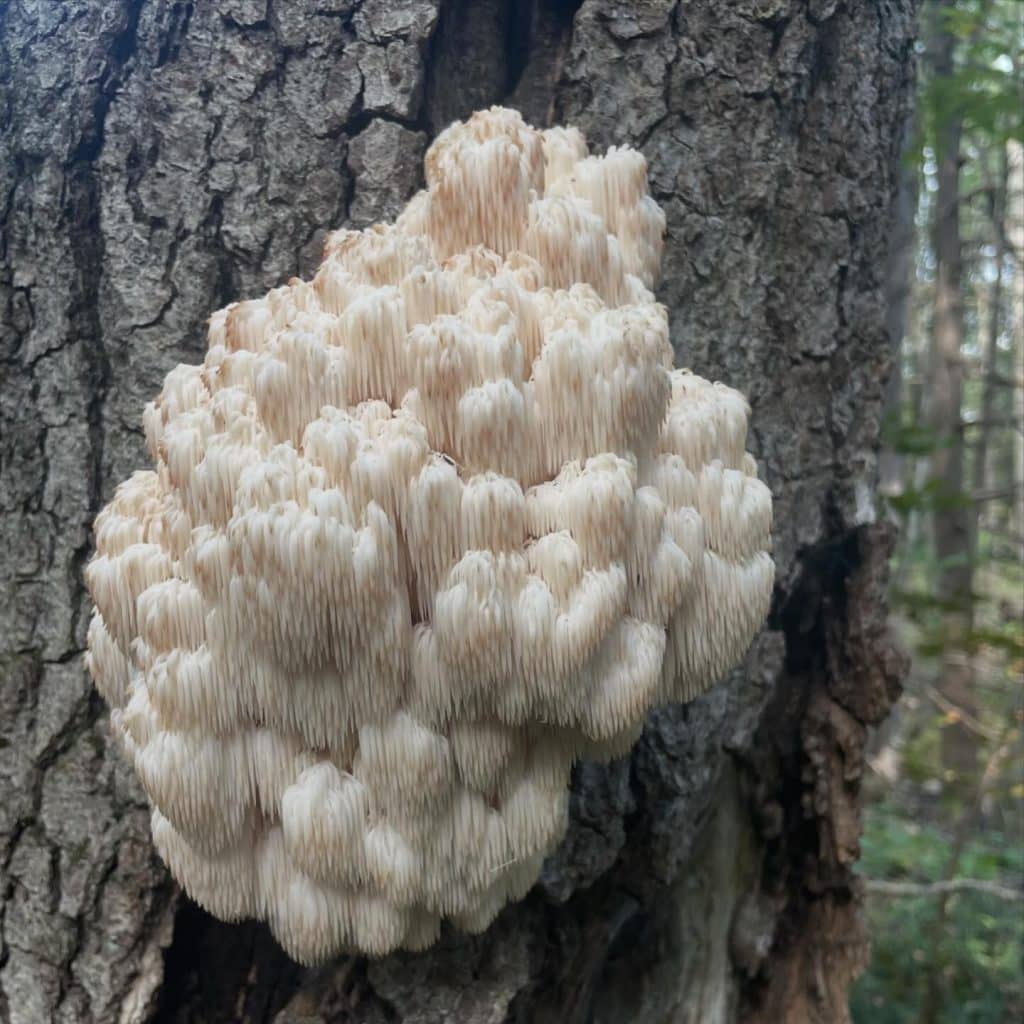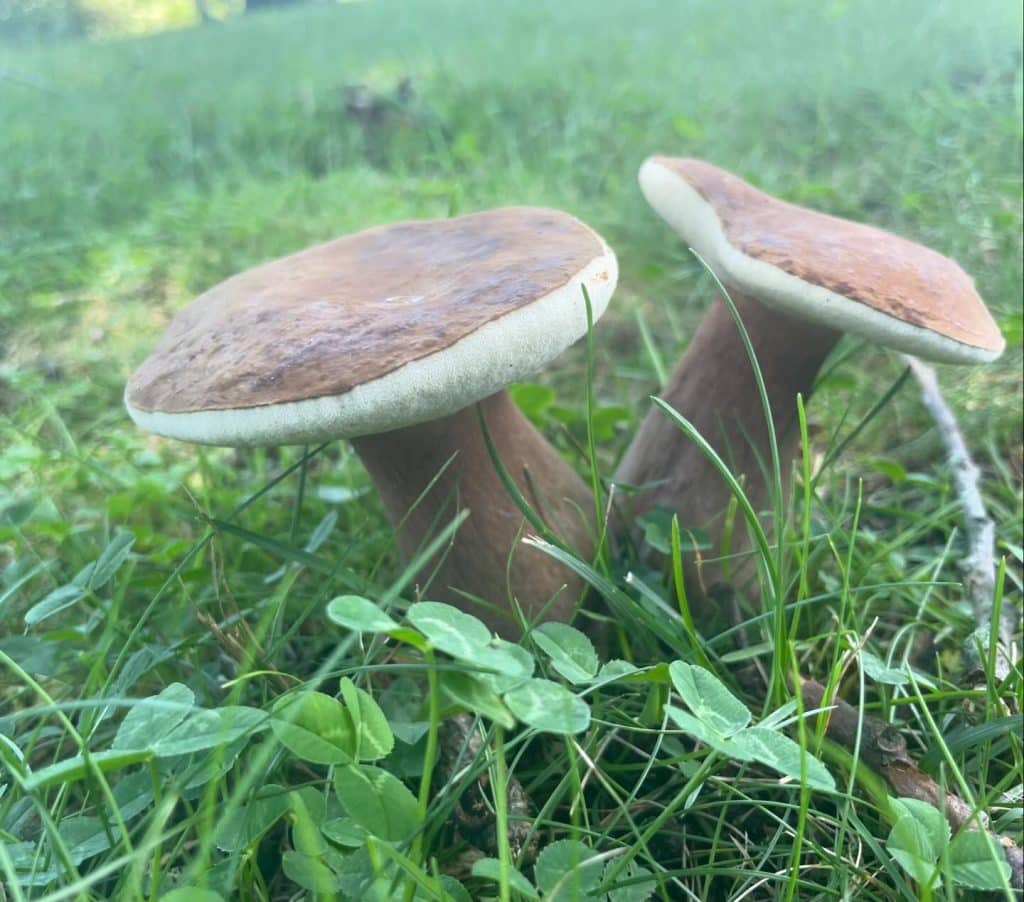Amanita chrysoblema – American Fly Agaric

The American Fly Agaric, yellow-orange variant (Amanita chrysoblema) is toxic, psychoactive, or edible depending on preparation. It fruits often in the fall and occasionally in the spring. This species was previously called Amanita muscaria var. guessowii. The American fly agaric is often found growing mycorrhizally with conifers but can also associate with deciduous trees. […]
Suillus weaverae – Butterball Bolete

The butterball bolete (Suillus weaverae) is an edible mushroom that fruits summer-fall. It is often one of the first boletes to fruit. The mushroom has an orange-brown, slippery cap and small glandular dots on the stem. The cap may develop a patchwork pattern as it ages. The pore surface is white at first, becoming yellow […]
Pleurotus dryinus – Veiled Oyster

The veiled oyster (Pleurotus dryinus) is an edible oyster mushroom that can be found throughout North America. It fruits spring-fall in New England. It is most often found growing as a decomposer on dead and dying oak and beech trees but can also grow on other hardwoods. The mushroom can grow singularly or in small […]
Sedum sarmentosum – Stringy stonecrop

Stringy stonecrop (Sedum sarmentosum) is an introduced perennial with edible leaves. It can be found in sunny areas with sandy soil. The plant can spread quickly, forming a mat on the ground. The fleshy leaves are arranged in whorls of three. Yellow star-shaped flowers are produced in the summer. The plant is edible raw or […]
Solidago rugosa – Wrinkleleaf Goldenrod

Wrinkleleaf goldenrod (Solidago rugosa) is a native perennial with edible and medicinal uses. There are over 75 species of goldenrod (Solidago spp.) in the United States. All above ground parts of goldenrods are edible, but taste varies depending on species. Goldenrods can be found in areas with well-drained soil and full sun. Wrinkleleaf goldenrod […]
Cercis canadensis – Eastern Redbud

Eastern redbud (Cercis canadensis) is a tree native to southwestern CT that produces edible flowers in mid-spring. Eastern redbud can be found in mixed woodlands or cultivated areas. Pink flowers appear in spring before the leaves emerge. Leaves are alternate and heart shaped. Flowers become pods in later spring. Redbud blossoms taste like sweet peas […]
Ulmus pumila – Siberian Elm

Siberian Elm (Ulmus pumila) is an invasive tree with edible samaras (seeds) that appear mid-spring. Siberian elm can be found in sunny areas such as fields and waste places. Siberian elm can be identified by its furrowed bark and alternate leaves that are elliptical in shape with toothed edges. Leaves have an uneven leaf base. […]
Pinus strobus – Eastern White Pine

Eastern white pine (Pinus strobus) is a native tree that can be foraged year-round. The entire tree is non-toxic. Eastern white pine has needles that grow in groups of five. This is the only pine tree in Connecticut that has five needles per bundle. Needles are edible and can be used to make tea year-round. […]
Codium fragile – Dead Man’s Fingers

Dead Man’s Fingers (Codium fragile) is an edible and invasive species of seaweed that originated in Japan. Dead man’s fingers can be found along the coastline during low tide. Seaweed can be harvested year-round. The plant is named for its finger-like fronds that hang from rocks. Dead man’s fingers can be a nuisance to […]
Laetiporus sulphureus – Chicken of the Woods

Chicken of the woods (Laetiporus sulphureus) is an edible mushroom that has a flavor and texture that is similar to chicken. Laetiporus sulphureus can be found growing on living or dead hardwood trees from May-November. It has bright orange caps with yellow edges. Pores and flesh are both yellow. Spore print is white. Chicken of […]
Solanum nigrum complex – Black nightshade

Black nightshade (Solanum nigrum complex) is an edible member of the nightshade family. It is an annual or occasionally a perennial that grows throughout the United States. It can be found in gardens, fields, and disturbed areas. Black nightshade leaves are alternate and can be smooth or slightly toothed. In the summer, the plant produces […]
Hericium americanum – Bear’s Head Tooth

Bear’s head tooth (Hericium americanum) is an edible and medicinal mushroom that is closely related to lion’s mane (Hericium erinceus). It fruits from late August to early November. Bear’s head tooth can be found as a parasite or saprobe on hardwood trees, especially beech, oak, and maple. It is often found in damaged parts of […]
Apioperdon pyriforme – Pear-shaped Puffball

The Pear-shaped puffball (Apioperdon pyriforme) is an edible mushroom that can be found as a decomposer of both coniferous and deciduous trees. It often fruits in large, dense clusters. The pear-shaped puffball can be either pear shaped or spherical. The color ranges from cream to yellowish-brown. This inside is white and marshmallow-like at first, becoming […]
Laccaria ochropurpurea – Purple Laccaria

Purple laccaria (Laccaria ochropurpurea) is an edible mushroom that fruits late summer-fall. It can be found in association with hardwood trees, particularly oak and beech, or white pine. Purple laccaria has a cream to violet-gray colored cap. The cap is convex at first, flattening with age. The gills are purple, lightening with age. The fibrous […]
Xanthoconium affine

Xanthoconium affine is an edible mushroom that can be found July-October. It is mycorrhizal with hardwood trees, especially beech and oak. The cap is dark brown or reddish-brown, turning yellowish-brown. Pores are white, becoming pale yellow. The mushroom does not stain blue. The stem is streaked with a color that is paler than the cap. […]
Suillus spraguei – Painted Suillus

The Painted Suillus (Suillus spraguei) is an edible mushroom that can be found in conifer forests from June-October. The mushroom grows scattered or clustered in the ground. It is a mycorrhizal mushroom that often associates with pine. The Painted Suillus has a unique scaly red cap and stem. The yellow pores are covered by a […]
Tylopilus ferrugineus

Tylopilus ferrugineus is an edible mushroom that is native to eastern North America. It fruits July-September. The mushroom is often found in grassy areas in association with oak or beech. The cap and stem are brown. The pores are white and stain brown. Young mushrooms have club-shaped stems and very firm flesh. Spore print is […]
Prunus maritima – Beach Plum

Beach plum (Prunus maritima) is a native plant with edible fruit. It is often found in dunes. It prefers full sun and has a high salt tolerance. Beach plums are shrubs that typically grow 4-8 feet tall. They produce five-petaled white flowers in spring. The leaves are alternate and finely toothed. The fruits are much […]
Xerocomus illudens

Xerocomus illudens is an edible bolete that fruits July-October. It forms mycorrhizal relationships with oaks and possibly other hardwoods. The cap is cinnamon-brown or pinkish-cinnamon colored. The pores are lemon yellow and angular. The flesh is pale yellow and does not stain blue. The stem is mustard-yellow and has a course net. Spore print is […]
Macrolepiota procera – Parasol Mushroom

The Parasol mushroom (Macrolepiota procera) is an edible mushroom that fruits August-October. It can be found in open woodlands near conifers or hardwoods or on lawns. The parasol mushroom is saprobic. The cap has scattered brown scales and develops a rounded bump on the center. The stem is slender, tall, and bulbous at the base. […]
